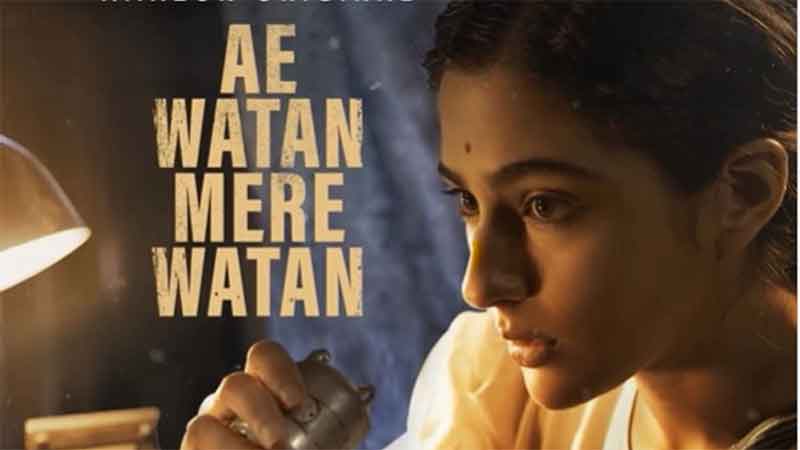
The past few months have been a topsy turvy ride for the Hindi cinema with several films falling like nine pins and at the same time few films taking everyone with surprise. But this article is not supposed to cater to analysis of the box office mechanism, but rather deal with the political climate that is defining and shaping the Hindi films for the past some time. At a time when religion has become the new yardstick to judge the quality and relevance of cinema, it is no surprise that we are able to see films catering for or against a particular religion.
But certain cultures, traditions and values transcend the boundaries of a particular religion and can boast of a universal appeal, veneration and adulation. Ramayana is certainly one such tradition which is loved all over the globe by billions of people. This adulation is reflected in the amount of representations of Ramayana and it’s characters in the popular culture. And what is more popular than a cinematic rendition of the Ramayana. Which is why the recently Adipurush has received so much attention before its release. But unfortunately the trailer and teaser of the film received criticism for its inaccurate representation of the Vanar Sena and particularly Ravana, and for its anachronistic tendencies, which seems to mirror the modern ideological sentiments more than the ancient roots which the film tries to represent. Despite this, the film received tremendous hype and traction visible in its humungous advance bookings and weekend collections. But now the films is receiving trmemdous brickbats for its inaccurate portrayal and utter insensitivity of dialogue writing. But, what if I tell you that perhaps that the ‘problematic’ representation of Ravana is not really a mistake or lack of research but a deliberate exercise on the part of the messaging and it’s anachronisms are part of the messaging that they are trying to make.
Ramayana is considered to be the genesis of the classic “good over evil” trope, where Rama is seen as the epitome of righteousness and virtues, a “maryada purushottam”, whereas Ravana is considered his arch nemesis, his antithesis, an antagonist who is highly skilled and intellectual, but even more power hungry, corrupt, lecherous and evil. But whatever glimpses we see of Adipurush, it becomes apparent that here Ravana is not a perfect evil, he is plain evil with all the physical mainfestations of what we consider evil – beard, out of place hairdo, associated with all things dark and dim, riding a bat (all signifying a dark atmosphere). Many people pointed out that Ravana here appears like a Muslim character, and the resemblance is too clear to be ignored. But what if this was the original intention of the makers? To create a parallel between the ancient Ravana and the modern Muslims. And this parallel had become even more apparent after the second trailer released yesterday.
The trailer starts with the Ravana in disguise of a Hindu saint urging Sita Mata to come out of her safety net (the Lakshman Rekha). As she comes out of her line of protection she is captured and taken away. As Ravana takes away Sita, slowly the tilak withers away from his head and Rudraksh beads are shattered and scattered. In today’s political climate, this scene has a wider implication. With the discourse of “Love Jihad” in its full rampage, the prevalent discourse is to prevent the daughters and sisters of the country from the clutches of the Muslim men, who are using them for forced religious conversion and committing atrocities on them. This discourse also acts as a warning for women to remain in the safe shadows of the family to prevent them from the evil eyes of the men of other religion. In that case, the Muslim men, according to this version, are using disguises of Hindu men to manipulate the Hindu girls to leave the safety net of their family and come to the men, who after claiming the support of the innocent Hindu women, will show their real form with their religious disguise going away and commit atrocities against these women.
In another scene, lord Rama appears to mouth the modern patriarchal anxiety of our society, wherein inter-religious alliances are treated as abduction of Hindu women, failing to prevent which is a blot on the masculinity of Hindu men. So, the war to protect the ‘daughters of the country’ is the ultimate test of the virility of Hindu men. By urging his army to fight for the ‘Bharat ki Betiyan’, nation is being defined as a women who needs to be protected from the outsiders. And it also creates a territorial barrier between Rama and Ravana, with Rama defining what is ‘Bhartiya’. This ‘self’ and the ‘othering’ of people makes the process of vilification even more apparent. And the objective of the war is to bring an era where no one can diminish the dignity of women of the nation and any such attempt is thwarted by the men of the nation. In the past some time, this notion of men taking the agency to not just protect women from outside influence, but also regulating their behvaiour and activity is increasingly being emphasized in the popular culture, and this appears to be an extension of the same concern. Here, a sense of vendetta and religious zealousness override the mission to establish the ‘dharma’ as was the case with Ramayana. This discourse was further echoed by Hanuman who used the similar rhetoric that “Whoever will cast a bad eye on our sisters will dig their own graves” or as put in their collequial slang ” Lanka laga denge”. The use of such derogatory language in my opinion was an intentional intervention on the part of the filmmakers to create a modern parallel where the dialogues are not aimed at Ravana or Indrajeet, but to the perpetuators of the modern society in the eyes of the Hindus.
In the next scene, Lord Rama urges the army to thrust the ‘Saffron Flag’ on the chest of the Evil force. Does Ramayana specifically mentions the saffron flag as their embelem? Saffron flag is very much a symbol of spirituality, but when used in the context of war, does it provide a religious dimension to a war which is fought between people belonging to the same religion? To counter this, Ravana’s association with Lord Shiva is constantly undermined to create a sense of religious dialectic, wherein religious identity becomes a centre point of waging a war. His values are all diminished and his characterization is modelled around an all evil villain where all the symbols around them are changed to emphasize the evilness. It is imperative that there should not be no remannt of positive trait remaining in Ravana to evoke sympathy so that the vindication and vilification can be much easier. Vilification and vindication are major political strategies in modern times to promote violence and justify it on religious grounds.
Even though the film has already received all the criticism from all quarters, and if the dialogues and characterizations are any indication of the film, it appears that the current political climate hovers over the discourse of the film, that’s why the makers decided to add the words “Sabhi Bhartiyon ki Adipurush” to cater to the humungous sentimental value attached to the story of Ramayana and mitigate the sub-par content of the trailer of the film. Needless to say, the film may earn back its investment but will it be a memorable film? Will it help in igniting a new discourse? Only time will tell.
Santosh Kumar Mamgain is a research scholar in the University of Delhi. He has published 2 books and more than 30 writings in different anthologies and 6 research papers.
















































